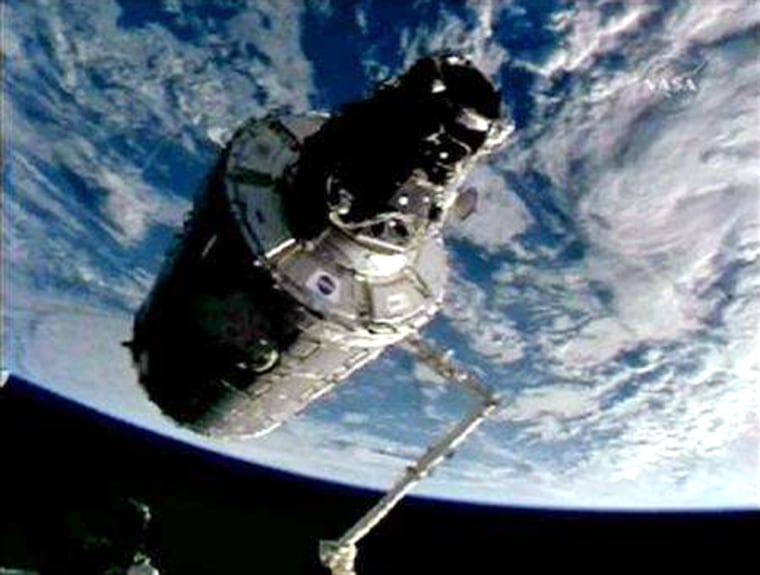Astronauts aboard the international space station on Wednesday relocated a newly arrived module needed to anchor European and Japanese research laboratories.
The connecting module Harmony, which was delivered by a space shuttle crew three weeks ago, was shifted from a temporary berthing port to the end of the station's Destiny laboratory in a critical step toward preparing the orbital complex for the arrival of Europe's first permanent space laboratory, Columbus.
The space shuttle Atlantis will take the Columbus lab to the station on a mission starting December 6.
Flight engineer Dan Tani used the space station's robotic crane to pull Harmony off the Unity node and reposition it at the end of the U.S. science laboratory Destiny.
"Hopefully, I didn't scare too many people down there," Tani radioed to flight controllers after the 16.5-ton load was bolted into place.
The station crew has been scrambling since shuttle Discovery's departure on November 5 to complete the work for Columbus' arrival. Two spacewalks are scheduled for next week to attach Harmony to the station's electrical, data and cooling systems.
NASA is investigating a possible problem with the U.S. spacesuits that could delay the outings. During a practice run in Houston last week, a Russian cosmonaut trainee reported smelling smoke in his spacesuit and feeling heat on his neck.
Engineers are investigating the chemical canisters used to remove carbon dioxide from the suits, a byproduct of the astronauts' breathing. A decision about whether to proceed with the spacewalks is expected on Thursday, NASA officials said.
The U.S. space agency needs to complete 11 more station construction missions and two resupply flights before 2010 when the shuttle fleet will be retired.
